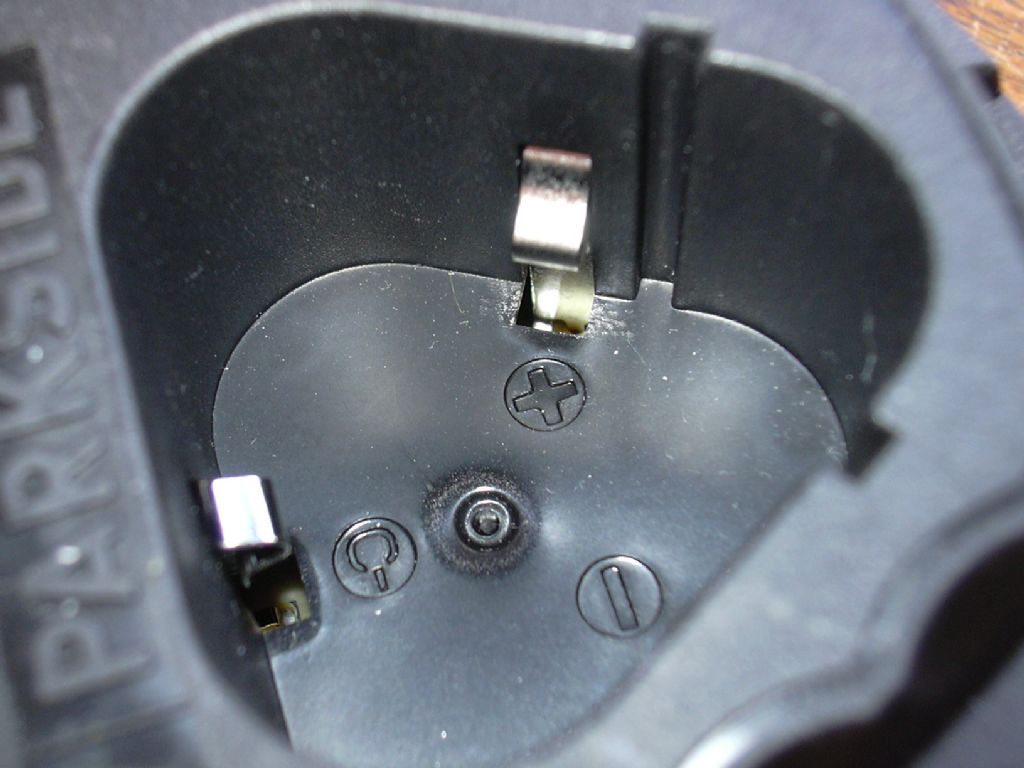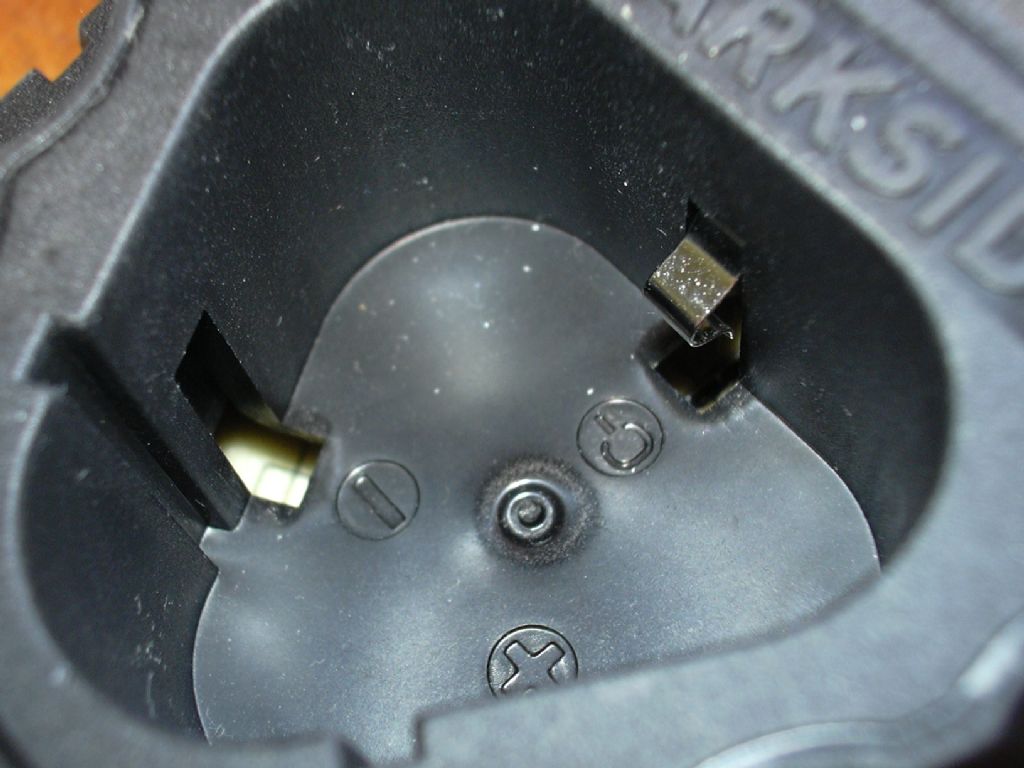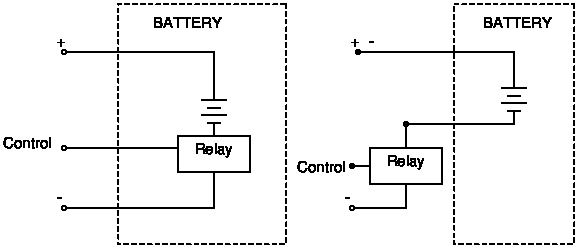If it works I wouldn't worry about it. There's more than one way of skinning a cat and battery chargers are no exception. Just an example, imagine the charger uses a relay (it would be electronic rather than mechanical) to disconnect the battery when the positive line rises above a certain voltage.
The relay can be inside the battery, in which case there are three wires (left circuit), or outside the battery, in which case there are two wires (right circuit):

This is just an example. Unlike a car battery and NiCADs etc, modern rechargable batteries are often stuffed full of electronics. Rather than an external controller in the charger deciding when a battery is charged, the battery either cooperates by signalling internal state back to the charger, or takes over entirely. Batteries and their chargers range between plain stupid (like my car battery charger), or highly intelligent like the battery in my newest laptop.
So the two wires on the Parkside might mean:
- Manufacturing error (in which case it either won't recharge or run the motor) , OR
- Cost has been reduced by simplifying the battery and charger. The long-term effect would be reduced service life. OR
- The battery has been upgraded so it doesn't need a control wire. (This isn't unlikely, because the charger will be based on an integrated circuit, and is likely clever enough to handle two wire thicko batteries, three wire semi-smart batteries, and brainy two wire batteries.)
Signalling has moved on; for most of my life extra wires were necessary to control equipment. Not so today – it's quite common to find devices exchanging control data over power lines, or a bus. Conversations are decoded by microcontrollers which can read sensors and operate switches to make stuff happen. No need for lots of wires.
Who understands how this particular device works? Not the user, or Lidl's Service Department! Parkside is a brand badge sold by Kompernass, website in German. The actual products are probably made in China, and are decent mid-range quality rather than dirt cheap. They could come from any of several factories working to a design. I've no idea who the designer is. Might be Chinese, quite likely it's Western: Germany, Japan, UK, USA, and several others commonly develop electronic products for manufacture abroad.
Not sure it's worth the effort of trying to penetrate through several layers to find the truth. Lidl will replace it if it's broke and they are very unlikely to know how it works. Might be possible to find a Service Manual on the web, but these tend to be terse. Probably the easiest way is to take it apart, but even this will be difficult if the components have proprietary part numbers and you don't know what to look for.
I'd just use it. I wouldn't twitch just because the contacts are a bit different, though it would be nice to know why.
Dave
Edited By SillyOldDuffer on 23/05/2020 12:12:29
 Neil Wyatt.
Neil Wyatt.






